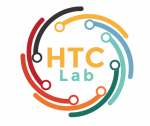Artificial Intelligence holds significant potential to enhance human creativity. However, achieving this vision requires a clearer understanding of how such enhancement can be effectively realized. Adopting the perspective of distributed creativity, we identify three primary modes through which AI can contribute to creative processes: Support, where AI acts as a tool; Synergy, where AI and humans collaborate in complementary ways; and Symbiosis, where human and AI cognition become so integrated that they form a unified creative system. These modes are defined along two key dimensions: the level of technical autonomy exhibited by the AI system and the degree of perceived agency attributed to it. We examine how each configuration influences different levels of creativity – from everyday problem-solving to paradigm-shifting innovation – and discuss the theoretical, ethical, and design implications.
Latest posts by Ryan Watkins (see all)
- How to science a science with science - July 4, 2025
- How we (Anthropic) built our multi-agent research system - July 1, 2025
- Automatic Large Language Models Creation of Interactive Learning Lessons - June 29, 2025
